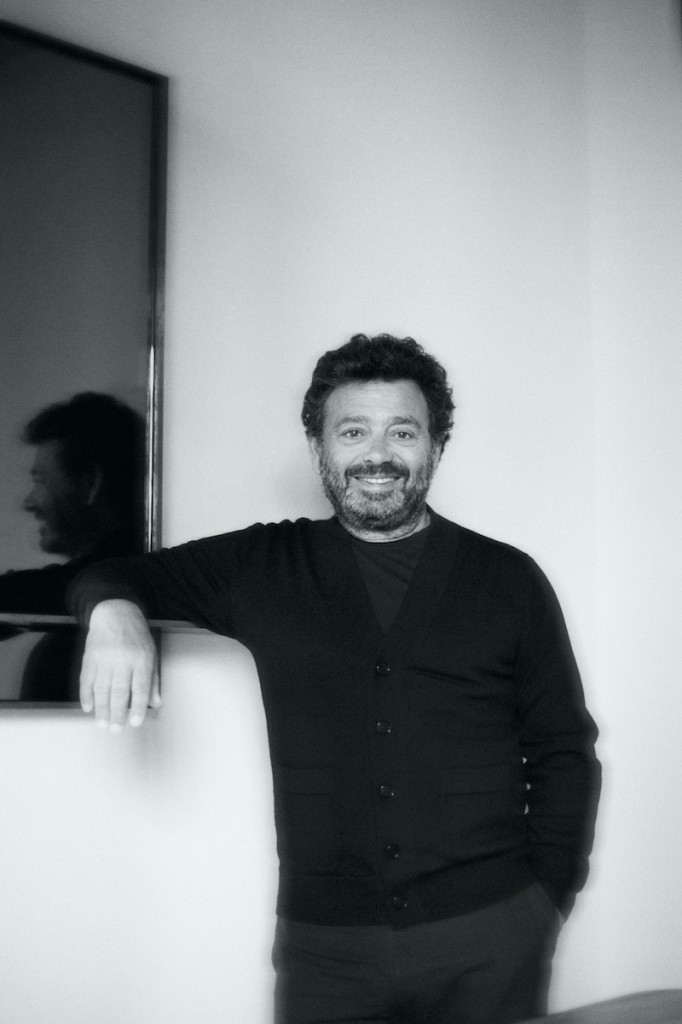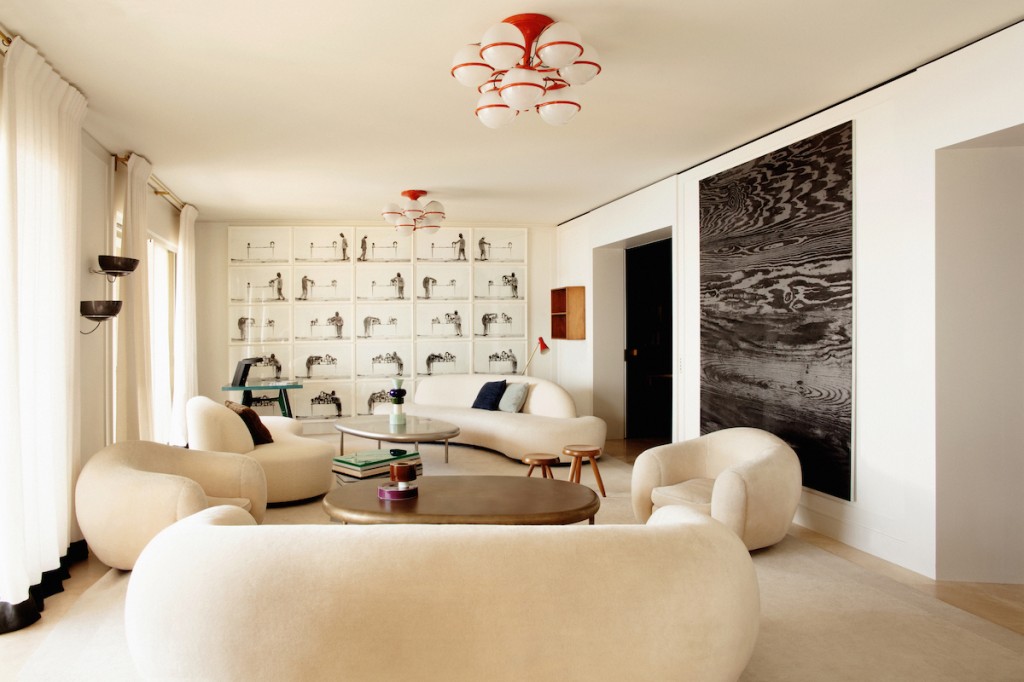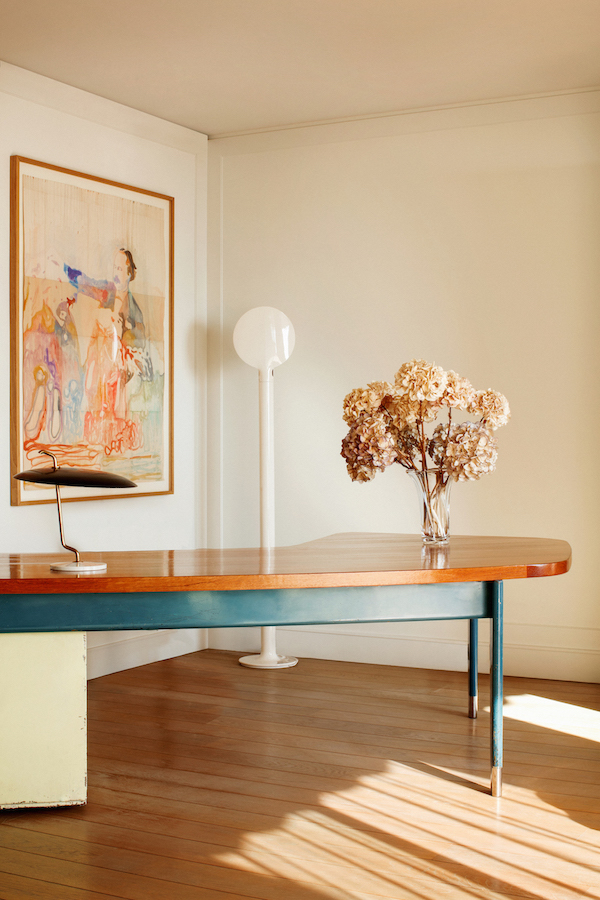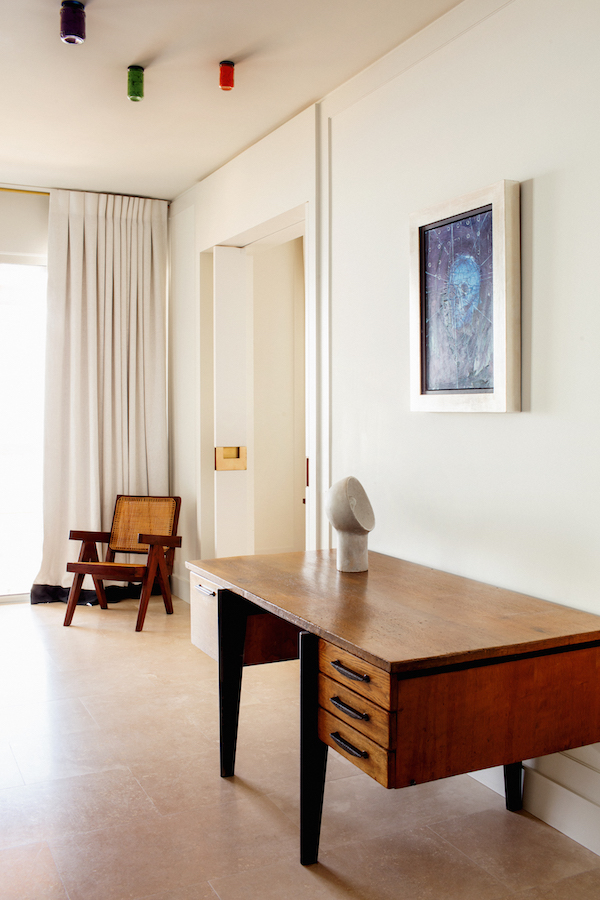A true Parisian and a highly sensitive architect, Charles Zana imagines each project through the lens of a French lifestyle, sharing his sensitive visions of space with his international and French clients. A passionate collector like his father, he has done in-depth research on the great Italian design masters of the 20th century such as Ettore Sottsass and Carlo Scarpa.
LARRY’S LIST spoke with Charles Zana who talked about the essence of French lifestyle according to him, his own personal art and design collection, trends that we can expect to see in his future projects, as well as the Instagram accounts he find most inspirational.

10 Questions with Charles Zana
What is your number-one rule when designing a space to best compliment an art collection?
My number-one rule when designing a space with a collection is to understand the collector(s) behind the space. A collector is always looking for the truth behind the accumulation. I seek this truth.
What do you think is the essence of French lifestyle? How do you incorporate that into your interior design?
The French lifestyle is a myriad of elusive elements such as the taste for detail, natural elegance, the importance of heritage or even romanticism. The starting point of all our projects always remains a question of historical roots, tradition and culture. And at the same time, it’s about audacity and the desire for change, with a resolutely contemporary touch. Ultimately, French taste is the heritage of a traditional culture with all the freedom that we allow ourselves to take—for example, classic French cuisine twisted by today’s chefs.


How do art collectors differentiate from your other clients?
The collector thinks of placing his art pieces in the project. He wants a space designed around the collection.
What was the most memorable experience of designing interiors for an art collector?
The most memorable experience was an installation by James Turrell in a Parisian apartment.
Collaborating in the creation of a unique installation for a specific space is a totally different experience from hanging classic paintings. It takes a lot of technique. The artist came for the installation at the end of the project, it was unforgettable.


Would you share some of your favorite artists that you love to see in collector homes?
Mario Schifano, Daniel Buren, Vassilakis Takis, Andy Wahrol, Tom Wasselmann, I like creating cultured combinations.
Interiors and art often seem to be in flawless harmony. Yet, we know from our collectors that artworks eventually change. How do the interiors you design adapt to an evolving art collection?
A home is always in motion. What are important are the connections of shapes and colors. Staging works of art also means allowing free hangings and dialogues between them. Finally, when we are in front of the works, the hanging makes sense.


Could you tell us more about your own personal art and design collection? Which pieces are closest to your heart?
I like to mix styles, periods and accumulate several objects. Put them in front, behind, play with spaces. Things often evolve in my house, but I really appreciate the bamboo and paper lamp by Andrea Branzi, ceramics by Ettore Sottsass or the collage by Mario Schifano. Other artists are part of my collection like Carlo Scarpa, Alessandro Mendini, Alighiero Boetti, Pierre Paulin or Jean-Michel Frank.

As a tastemaker, are there any trends from your perspective you could share with us? What can we expect to see in your future projects?
Going back to the essence of what I loved 30 years ago. It’s to find a simpler, truer form with less worked materials. A return to nature perhaps, getting closer to raw and real materials while respecting our existing heritage.
What advice would you give to a young designer in finding their own unique perspective in interior or furniture design? Or even to a young collector looking to create a minimalist space at home?
Always putting substance behind form, remaining open to changes in society.


Can you share some of the Instagram accounts that you find most inspirational?
FormaFantasma, the design studio of Andrea Trimarchi and Simone Farresin (@formafantasma)
François Halard, photographe (@francoishalard)
Alexandra Golovanoff (@alexandragolovanoff)
Michele de Lucchi (@micheledelucchi)
Yann Couvreur (@yanncouvreur)
Invisible Collection (@theinvisiblecollection)
Carpenters Workshop Gallery (@carpentersworkshopgallery)
Related: Charles Zana
Instagram: @charles_zana
By Ricko Leung





